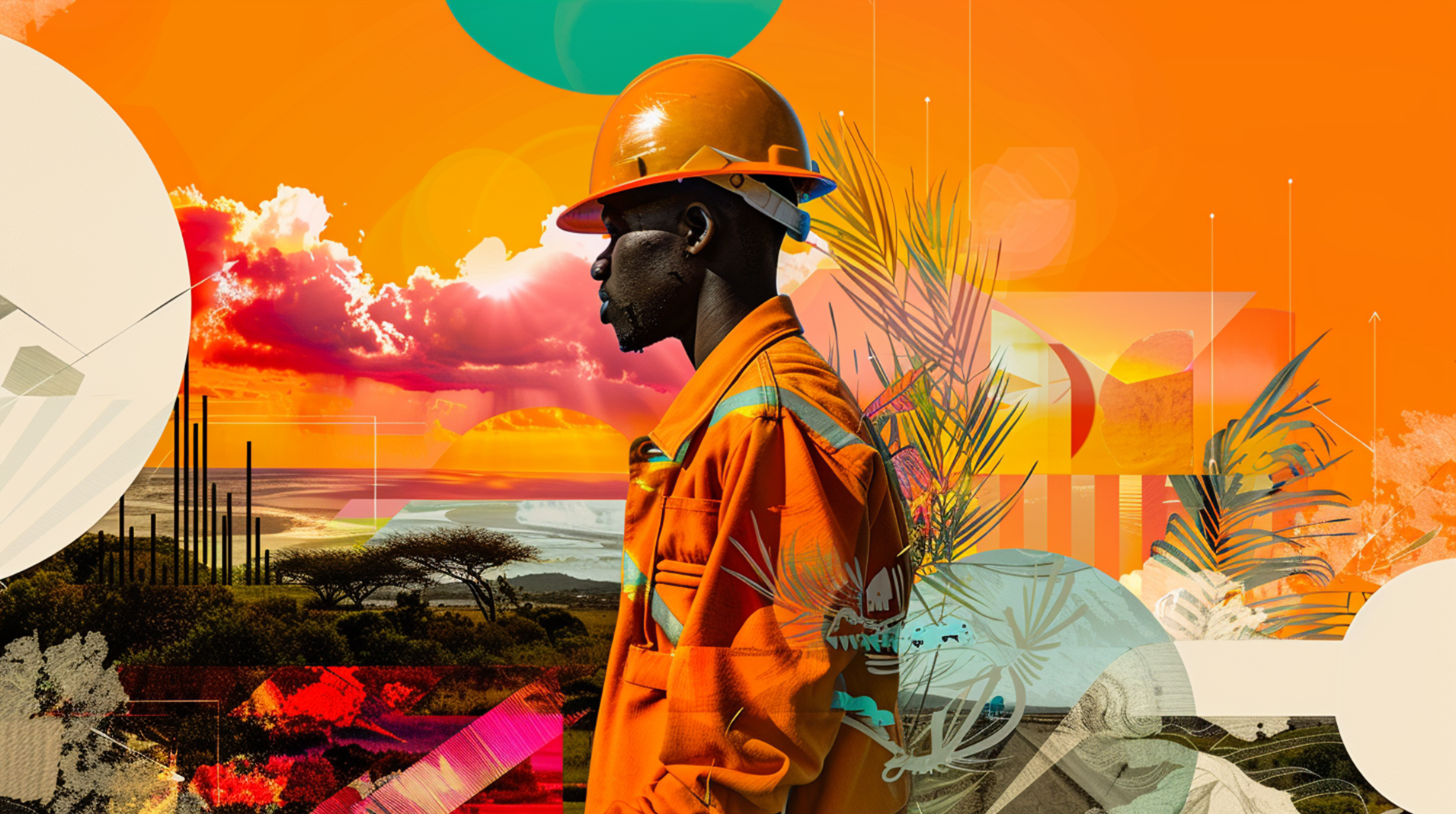Safety first. But can we ignore the climate crisis at work?
As we commemorate the World Day for Safety and Health at Work today 29th April, a pressing issue comes sharply into focus—the profound impact of climate change on workplace safety. Traditional safety standards are essential, but they are no longer sufficient alone. We must expand our horizons to address emerging threats posed by climate change, which introduces complex hazards threatening the health and safety of workers globally, particularly in regions like Africa where the impact is more pronounced and resources to combat it are often limited.
Understanding the Risks
In Africa, the effects of climate change are not a looming threat but a present reality. Workers in agriculture, mining, and construction are finding themselves on the front lines, facing increased risks:
Excessive heat: In many parts of Africa, outdoor workers endure extreme heat that can lead to serious health conditions, including heat exhaustion and heatstroke. The need for comprehensive heat action plans is more critical than ever, incorporating adequate rest, access to water, and perhaps most importantly, education on recognizing heat-related illness symptoms.
Severe weather events: The continent frequently faces extreme weather conditions such as floods and droughts, disrupting not just daily life but also posing serious risks to safety and health at work. Ensuring robust emergency preparedness and infrastructure resilience is essential to protect workers and maintain continuity of operations.
Air quality and respiratory health: In urban areas and industrial settings, air quality is a growing concern. Workers are increasingly exposed to pollutants that can lead to chronic respiratory conditions, necessitating stringent monitoring and protective measures.
Vector-borne diseases: With changing climate patterns, diseases like malaria and dengue are seeing altered transmission cycles and geographical spread, which could affect worker health significantly, especially in rural and agricultural settings.
Agrochemical exposure: Shifts in agricultural practices influenced by climate change could lead to increased use of pesticides, posing health risks to farm workers. Proper training and protective gear are indispensable to mitigate these risks.
Insights from a sustainability expert
To provide a deeper perspective, we spoke with Christine Nafula, Sustainability Manager at CSI Energy Group, who emphasized the interconnectedness of climate change and workplace safety. "In Africa, where the impacts of climate change are deeply felt, addressing workplace safety means tackling environmental issues head-on. Companies must integrate climate resilience into their safety protocols to protect their workforce effectively," Christine explains.
For her, as we tackle the complexities of climate change in relation to workplace safety, it's imperative that our strategies are both innovative and deeply rooted in the local context. In Africa, where diverse environments and cultural backgrounds shape the workforce, our approaches must reflect these realities to be truly effective.
Cultural and contextual adaptations: It's essential that our solutions are culturally appropriate and specifically tailored to meet the unique challenges faced by workers across different sectors and regions. This includes leveraging traditional knowledge and practices that communities have historically used to adapt to environmental changes. For instance, in the construction and energy sectors, we can integrate indigenous weather forecasting techniques with modern technology to create a more robust safety system.
Technological interventions: The use of technology, particularly early warning systems and climate monitoring, can significantly enhance our preparedness and response to climate-induced hazards. Mobile technology, which is widely accessible across Africa, serves as a crucial tool for disseminating safety and health information. By delivering real-time data and training directly to workers' mobile devices, we can ensure that safety protocols are both understood and immediately actionable.
Community and worker engagement: Safety solutions must be developed with the input of the workers and communities they are meant to protect. This engagement not only ensures that the measures are practical and effective but also fosters a culture of safety that empowers workers. Community-based approaches to safety training can notably enhance resilience, turning each worker into an advocate for safety and health in their workplace.
Policy and governance: Robust governance frameworks are necessary to enforce safety standards and adapt them in response to the evolving challenges posed by climate change. Policies need to prioritize worker safety and health within the context of these environmental challenges to drive sustainable development. For the energy and construction sectors, this means advocating for regulations that enforce the implementation of advanced safety technologies and require regular safety training that addresses both traditional risks and those emerging from climate change.
She concludes “As we tailor our approaches to the unique landscapes of African workplaces, the integration of cultural understanding, technological advancements, community involvement, and strong policy support is crucial. These strategies not only address the immediate risks but also build a foundation for long-term resilience in the face of climate change, ensuring that our workplaces remain safe and sustainable environments.”



